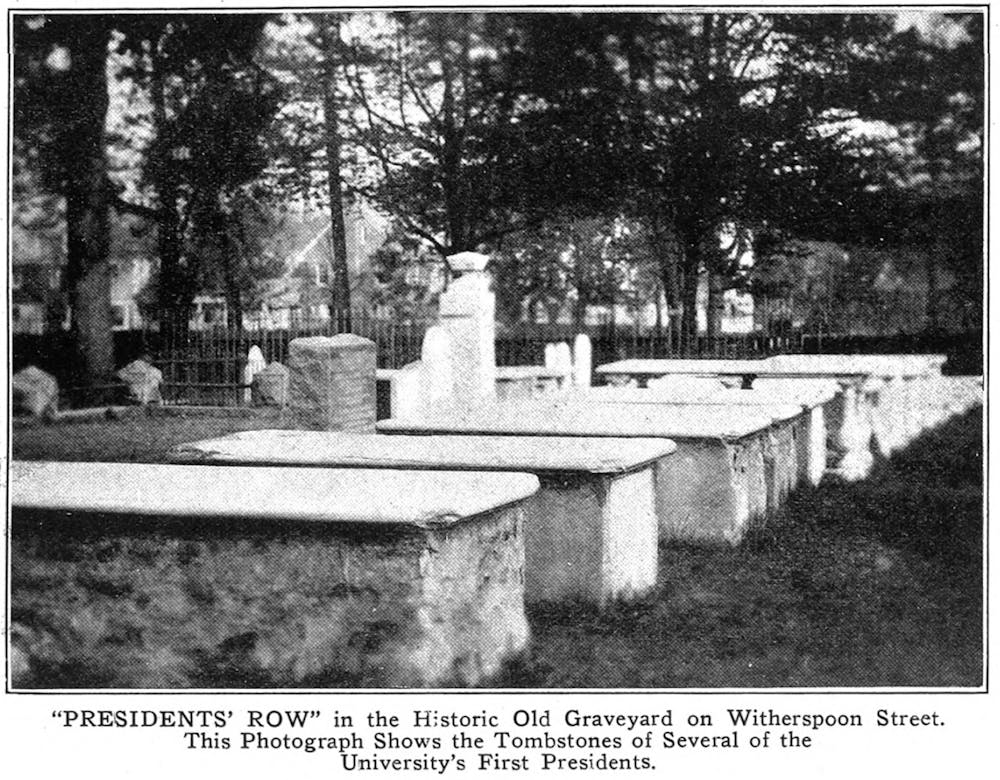As All Hallows’ Eve looms, Princetonians look to embrace their orange and black and wreak havoc at Eating Club costume parties for the Halloween season. Princeton has celebrated October with pumpkin heads and skeletons decorating the window ledges of Blair and Little Hall while black cats roamed in the campus shadows, but we must all be wary of supernatural forces far spookier. This week in history, The Daily Princetonian resurrects the specter said to haunt Nassau Hall: vice president Aaron Burr Jr.
Following his funeral in Nassau Hall in September 1836, Burr 1772 was buried just beyond FitzRandolph Gate, in Princeton Cemetery, at the foot of his father’s grave. Known as the ‘Westminster Abbey of the United States,’ this hallowed plot of American history is home to some of this country’s eminent deceased, from U.S. president Grover Cleveland to signer of the Declaration of Independence John Witherspoon.
On Oct. 23, 1980, Associate News Editor T. Keating Holland ’82 reported on the various “ghosts and ghouls making Princeton their haunt,” from Hamilton Murray 1872 meddling with the floorboards and lighting at Theatre Intime to a British soldier slain in the 1777 Battle of Princeton wailing in Holder Hall.
“Twentieth-century skepticism and a touch of academic snobbery may have relegated many of Old Nassau's ghost legends to obscurity,” Holland wrote, “but a flock of ghoulish tales have survived the test of time.” Of the superstitions and spooks recounted, though, Burr’s ghost tale was missing.
Those who believe Aaron Burr’s shade drifts about the town and haunts what was then the sandstone College of New Jersey existed far before Holland’s article. On the first nighttime deluge of every fall semester, “[s]ophomores would herd a bunch of first-classmen down Witherspoon St. to see Aaron Burr arise” in a longstanding but since-forgotten late-1800s tradition.
Burr’s entombed body may be cast six feet deep, but his face is cast in plaster and resides above ground at his Alma Mater: Burr’s death mask, a lifeless likeness, was taken immediately after his death and donated to the University Library by Laurence Hutton, an American essayist and Princeton Lecturer of English.
While Burr is immortalized in ghost tales, he is scarcely commemorated on campus. Aaron Burr Hall is an eponym for his father and otherwise, there is little trace of Burr in hung portraits or erected statues. Even so, early American history and his scandals — he killed Hamilton and was alleged to have committed treason against the U.S. — preserves him in Princetonians’ memory.
Before Princetonians stampede towards Prospect Street — or hit the books — at the witching hour, they could take inspiration from their predecessors by paying a visit to Old Nassau and the iron-fenced cemetery two blocks down. They might just get the chance to feel a chilling shiver at the passing shade of Princeton’s dear son and America’s reviled politician.
Lola Horowitz is a contributing Archivist for the ‘Prince.’ Please send any corrections requests to corrections[at]dailyprincetonian.com.









